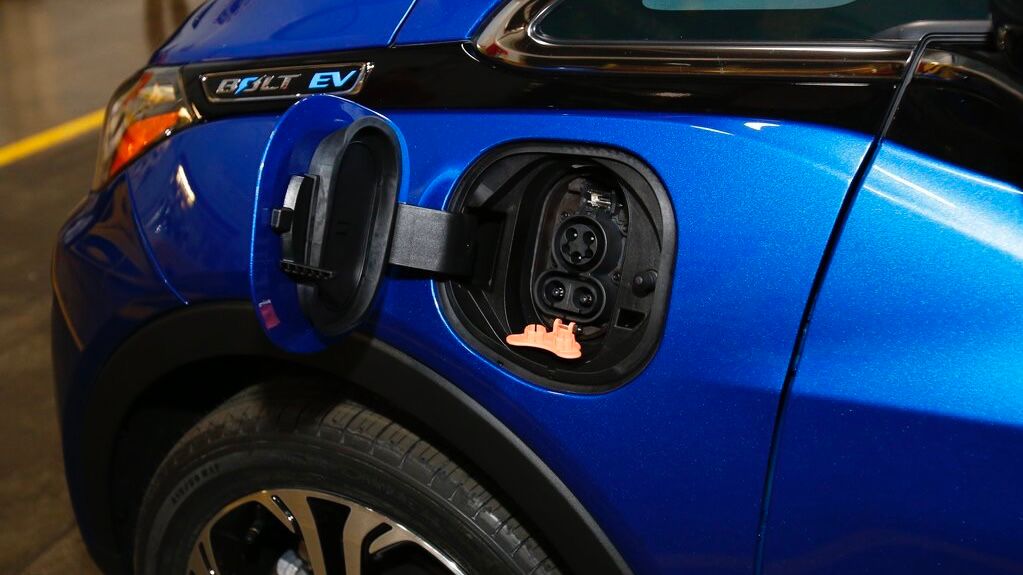The Department of Energy released final rules on Tuesday for how it determines electric vehicles’ fuel economy.
In what is considered a win for the "Big Three" Detroit automakers, the rules require lower EV mileage for car companies than originally proposed.
The DOE’s so-called Petroleum Equivalency Factor gives EV mileage as an equivalent to gas-powered vehicles’ miles per gallon. That PEF currently means a battery electric vehicle is roughly equal to a gas-powered car that gets 300 mpg.
“That’s really high fuel economy,” Alliance for Automotive Innovation President and CEO John Bozzella said in a statement about Tuesday’s DOE ruling.
The trade association for the U.S. auto industry had protested an earlier DOE proposal that would have cut the equivalent fuel economy rating of a battery electric vehicle by 72% in 2027. Doing so, the trade group argued, would “perversely disincentivize the production of battery electric vehicles” and “misalign” a pair of fuel economy rules automakers must meet or risk paying billions of dollars in civil penalties.
The Detroit Three and the United Auto Workers estimated they would have had to pay $10.5 billion in fines through 2032 under the earlier proposed rule.
Under the final rule the DOE announced Tuesday, battery electric vehicles will be able to more gradually reduce their petroleum-equivalent fuel economy. It adds three years to the phase-in and also cuts the fuel economy equivalent by a total of 65%.
Later this spring, the National Highway Traffic Safety Administration is expected to propose new Corporate Average Fuel Economy rules. The so-called CAFÉ rules are calculated by averaging the fuel economy of all of the vehicles’ in an automakers’ portfolio.
Established in the 1970s when the only cars on the road were powered with gas, the goal of the CAFÉ rule is to make vehicles’ more energy efficient.
“Here’s the rub. EVs on the road today don’t combust anything. They don’t emit anything,” Bozzella said, adding that CAFÉ rules may no longer make sense when electric vehicles replace those that use internal combustion engines.
This week, the Environmental Protection Agency is expected to propose new automobile pollution limits that would require more than half of all new vehicles sold in the U.S. to be electric by 2030. The rules will set greenhouse gas emission limits for 2027-2032 model years passenger vehicles that are even stricter than what the auto industry agreed to in 2021.



